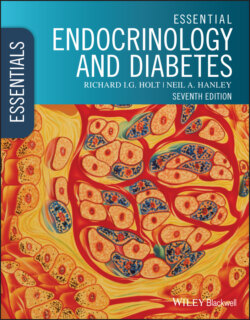Читать книгу Essential Endocrinology and Diabetes - Richard I. G. Holt - Страница 89
Immunometric assays – the sandwich assays
ОглавлениеIn the immunometric assay (shown for GH in Figure 4.2), a constant amount of antibody is added to each tube with increasing, known amounts of reference preparation. After incubation, the amount of GH bound to the antibody is detected by adding an excess of a second labelled antibody to all tubes. The second antibody is directed against a different antigenic site on GH from the first antibody to form a triple complex sandwiching GH between the two antibodies. Any unbound antibody is removed, leaving the amount of triple complex to be determined by quantifying the bound label (e.g. fluorescence or radioactivity). This emission is plotted for increasing, known amounts of reference compound to generate a calibration curve (Figure 4.2). In practice, five to eight concentrations of hormone standard are used to generate a precise calibration curve, against which patient samples can be interpolated. The immunometric assay is suitable only when the hormone to be measured permits discrete binding of two antibodies. This would not work for small hormones such as thyroxine (T4) or tri‐iodothyronine (T3), for which the competitive‐binding immunoassay system must be used.
Figure 4.1 The basics of immunoassay are shown for growth hormone (GH; see text for details). For clarity, in Figures only small numbers of hormone molecules and antibodies are shown; in practice, numbers are in the order of 108–1013.
